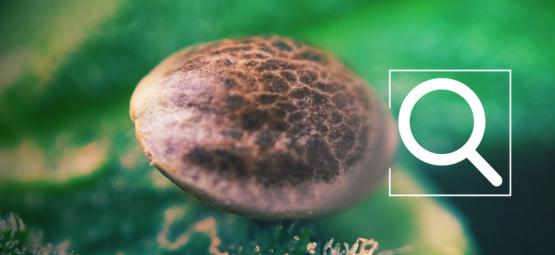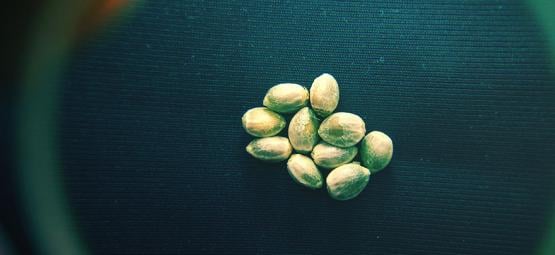Cannabis Seedfinder: Select The Best Cannabis Seeds
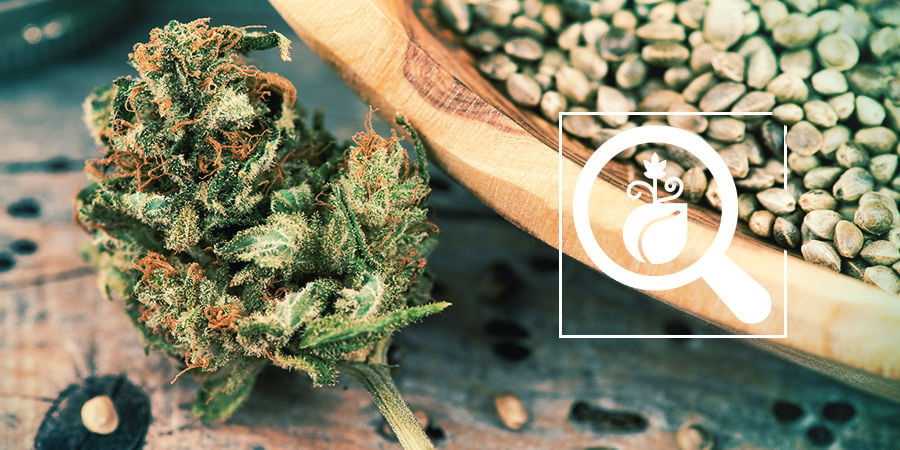
Looking for a seed to suit your needs? Want a strain that is compact, sweet-tasting, or quick to flower? We've got you covered. Whatever your preferences, check out our seedfinder, and we'll help you track down the very best strain for your wants and needs. Input your requirements, and let us do the work.
Here at Zamnesia, we’re changing the game. With our new seedfinder tool, we’ve taken the effort out of searching for that perfect cannabis seed—so you won’t miss out on one just because it didn’t make a certain list. By entering your personal criteria: growing space, genetic preference, height, cannabinoid profile, effects, and flavours, our seedfinder will show you the best strains to meet your specifications.
How To Find the Best Cannabis Seeds
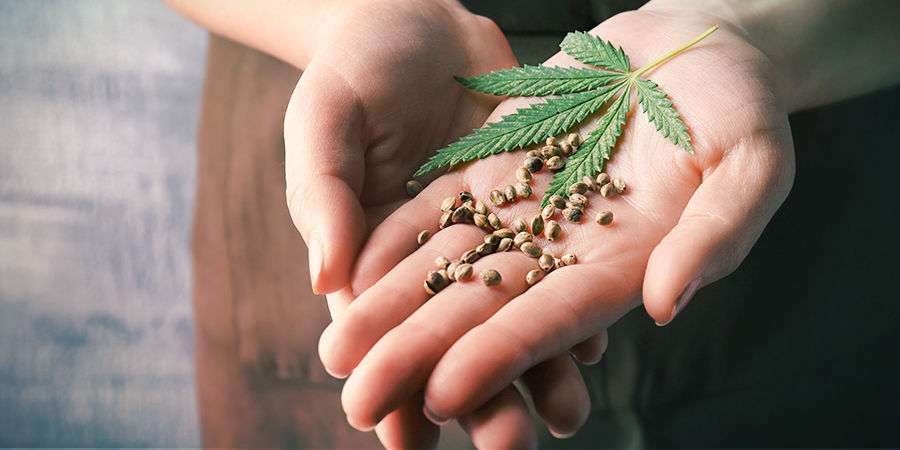
This is exactly why we’ve developed the seedfinder. With cannabis, there is no one-size-fits-all solution. So, while we try to help out by writing lists of the best cannabis seeds in certain categories, ultimately, everyone has their own specifications. But, with our seedfinder, you can fine-tune everything you want from your cannabis, narrowing the options down until you find the perfect strain.
What To Consider When Choosing Cannabis Seeds
When choosing the best cannabis seeds for your needs, it’s important to identify what you want from them. Do you want something that’s tried and tested, a resilient plant that can take care of itself in the cold and rain? Or, have you got the world’s most high-tech, climate-controlled grow room just waiting to look after those sensitive seeds? Do you have a bit of cupboard space or an empty garage?
By figuring out exactly how and why you’re growing seeds, the seedfinder will assist you in picking the perfect one.
Growing Experience
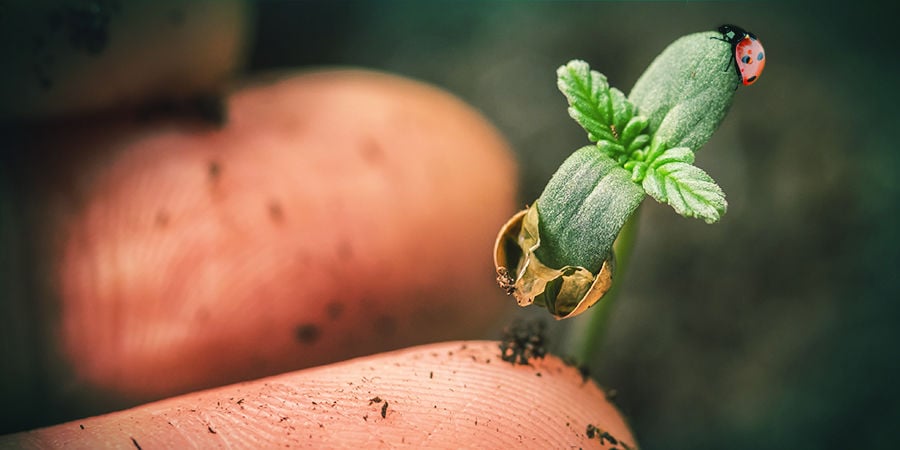
The first thing you need to decide is what level of grower you consider yourself to be. While advanced growers may opt for easy seeds, and novice growers may take on a challenge, growing seeds that complement your skill set (at least initially) is likely to give you a lot more joy when growing. Nothing is more annoying than taking on a difficult plant only to have it die after a few months because you mixed the feed wrong.
Beginner
A beginner grower is somebody who has never grown cannabis before. If you’re new to growing, it’s common to either overestimate yourself or underestimate the specific needs of the cannabis plant. In some ways it’s like other plants, and in some ways it’s not. Nutrient hungry and requiring sufficient care, consider starting off with more robust strains, as these are resilient but will still present a challenge.
What’s more, the easier the strain is to grow does not necessarily mean worse results. Some of the strongest, highest-yielding strains are also easy to grow. Often, people will pick a challenging strain purely for the pleasure of meeting its unique needs.
Another thing to bear in mind: you’ll get more from a lower-yielding plant that is grown well compared to a high-yielding but poorly grown plant.
Intermediate / Advanced
Our seedfinder classifies an intermediate grower as someone who has completed more than five (successful) grows. At this level, techniques such as SOG and ScrOG, main-lining, and other advanced techniques can be used to maximise yields and the efficiency of your grow space. The seedfinder takes this into account, as not only are some strains more difficult to grow, but certain ones really call for training techniques in order to thrive.
Growing Space
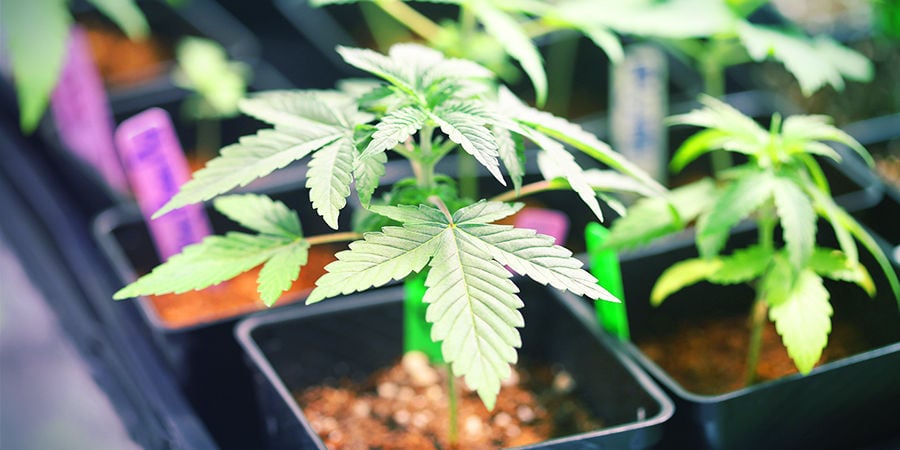
This is one of the biggest factors to consider when growing cannabis. Will you be growing indoors, outdoors, or in a greenhouse?
Indoor
Growing indoors is an incredibly popular option. Discreet, highly manageable, and effective, it has a lot going for it. By growing indoors, you can keep growing all year round. If you live in a colder, wetter climate, this becomes even more of an advantage. On the other hand, growing indoors is a very involved process. It’s not simply a matter of watering your plants every few days on the window sill. And, for best results, you will need a well-designed, fully dedicated space to achieve it. Start-up and running costs are greater than outdoor growing too.
The seedfinder will take this into account, as some seeds are better suited to indoor cultivation than others.
Outdoor
Growing cannabis outdoors is a wholly different experience. A large amount of the job is handed over to nature—for good and for ill. Of course, you will still water, trim, and manage your grow, but a lot more is left to chance. If you have days and days of heavy rain or a cold snap, then it’s out of your hands. Likewise, if the climate is good for it, then it is a much less intensive process. A major advantage of outdoor growing is that plants can become significantly larger, potentially resulting in huge yields from a single plant—sometimes up to 2kg!
Greenhouse
Growing in a greenhouse offers a good balance between indoor and outdoor growing. It comes with the advantages of real daylight alongside a controlled and sheltered environment. There is a distinction between normal greenhouse growing—just the structure—and fully controlled greenhouse growing with lights and controlled humidity, etc. The former is closer to outdoor growing, but with added stability and control, while the latter is much closer to indoor growing, but harnesses the power of the sun.
Climate
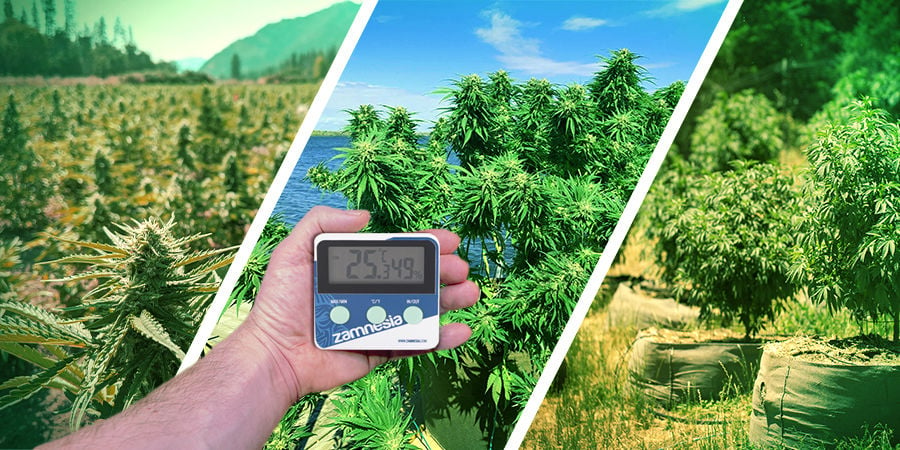
When deciding where your grow will take place, your local climate will be the deciding factor. Some seeds hate hot weather, others hate cold weather.
Cold Climate
A cold climate is one where a wet, cold winter comes in hard and fast, usually in September: Sweden, Norway, Finland, and Russia are included in this category.
If you’re growing outdoors in a northern country, there’s no point in buying a delicate plant that finishes at the end of October. You’ll want to find something robust that reaches harvest in September, or you should grow indoors. The seedfinder will help you find the best cannabis seeds for this.
Temperate Climate
Temperate regions are those in which summer draws to a slower end throughout September, with the cold not properly setting in until October. Although, September may be cool and wet. These regions are the UK, Netherlands, France, Germany, and much of central Europe. In these climates, depending on the year, you may be able to push the harvest date into mid-October, but you'd be leaving a lot to chance.
Mediterranean Climate
These are hot climates with long summers and short, mild winters. Winters here will not set in until November or even December. These countries are Spain, Greece, Portugal, Italy, and so on—all the ones you’d go to for a beach holiday. An important factor about these climates is that they are often fairly dry throughout the year. So, when choosing seeds, the seedfinder will take limited rainfall and later harvests into account.
Cannabis Seed Genetics
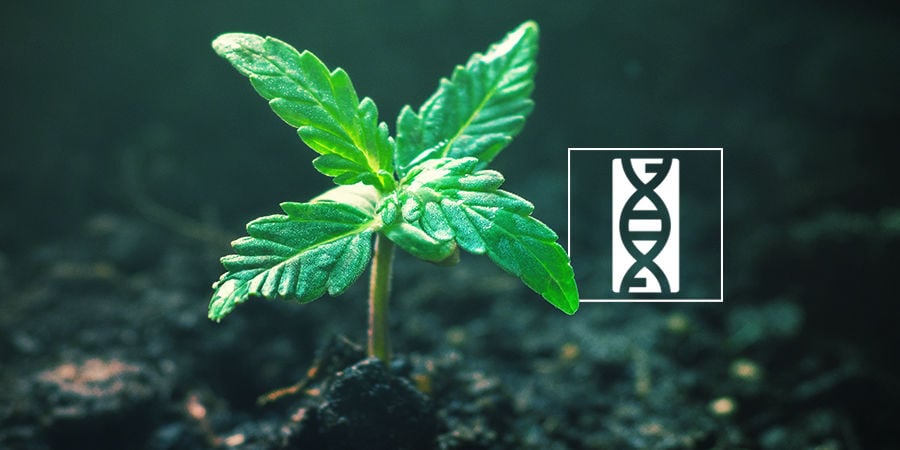
There are two main genetic categories that cannabis falls into: indica and sativa. However, most strains nowadays are hybrids of the two. There are also ruderalis genetics—which forms the basis of autoflowering varieties—and CBD-rich varieties. It’s important to recognise that these classifications are often fluid, and experience significant crossover.
In the past, the indica/sativa distinction was used to classify both a plant’s morphology and its effects. Today, however, we know that the terpene and cannabinoid content is the main determinant of a strain’s physiological effects.
Cannabinoids play the most important role in a strain's effects. THC and CBD are the two prevailing compounds in cannabis, but they exert very different effects. As such, the ratio of these two cannabinoids has a large impact on the final effects of a given strain. From here, terpenes are responsible for the distinctions in physiological sensations experienced on cannabis. Some terpenes are known to encourage sleep and relaxation, whereas others are uplifting and energising. As cannabis contains around 200 terpenes in different concentrations, there is a wide range of effects that can be experienced with different strains.
Indica
Indica strains are squat, bushy, and tend to be associated with physical, relaxing highs. The buds of Cannabis indica grow thick, dense, and exhibit dark green hues. Kush varieties are a dominant family in the indica strain category. In terms of growing, indica-dominant varieties tend to be high-yielding, fast to flower, and require less maintenance than sativa strains. In terms of flavour, pure indica strains often exhibit heavy, dark flavours reminiscent of earth and pine.
Sativa
Sativas, on the other hand, are tall, spacious, and usually contain terpenes that elicit an energetic and uplifting high. Though selective breeding has made some improvements in this area, sativas have much longer life cycles than indicas, and can be difficult to control indoors. They are not for the stealth grower. With good yields and unique aesthetics, sativa strains are recommended for the passionate grower. Pure sativas, like Hazes, give off flavours of citrus, fuel, and Skunk.
Ruderalis
On its own, ruderalis is not of much interest to cannabis users, as it is small, weak, and low-yielding. However, it has one unique quality that makes it indispensable. As it comes from cold, dark regions, it has developed to flower after an allotted period of time, not in relation to the light. When bred with ruderalis, sativa and indica strains can take on this autoflowering quality too, revolutionising cannabis cultivation.
Cannabis Seed Variety
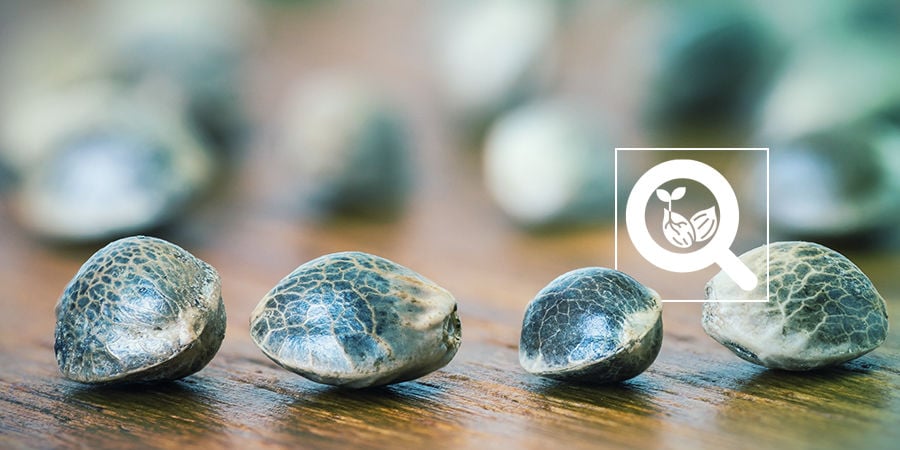
This leads us to the discussion of photoperiod versus autoflowering genetics.
Photoperiod
Photoperiod cannabis seeds were all we had access to until indica and sativa strains were bred with ruderalis. These seeds evolved to follow the motions of the sun. They enter the flowering stage when light levels decrease, indicating autumn. Indoors, this is represented by switching to a 12/12 light-cycle. 18/6 is usually used during the vegetative cycle. When buying photoperiod seeds, the flowering time will be indicated—this is not the time from seed to harvest. Indoors, it is represented by weeks; outdoors, there is a fixed time of year when they will flower.
Indoors, photoperiod strains can be grown all year round, as you can mimic the sun’s cycles. Outdoors, they are beholden to the sun, and therefore can be difficult to grow if the oncoming winter poses a threat. Outdoors, autoflowering seeds are recommended for beginners. However, well-grown photoperiod seeds tend to produce greater yields, though this is changing.
Autoflowering
Autoflowering seeds are perfect for the novice cannabis grower, or those who want a quick turnaround. Growing times here indicate the time from germination to harvest. They will automatically begin to flower within a matter of weeks. Much faster and often more resilient than photoperiod strains, they tend to be the easy option.
Feminized vs Regular Cannabis Seeds
For most growers, feminized seeds are the way to go. Regular seeds have a 50/50 chance of becoming male or female plants, and males do not produce smokable bud. What’s more, if they pollinate your female plants, their yield will be massively reduced too. With feminized seeds, only about 1/1000 is male, so your overall yield will be much better.
The only real reasons to buy regular seeds are if you intend to breed your own strains, breed to collect seeds, or to take clones. The seedfinder does not include regular seeds, as if you’re at the point of breeding your own, it probably won’t be of much use to you.
Plant Size
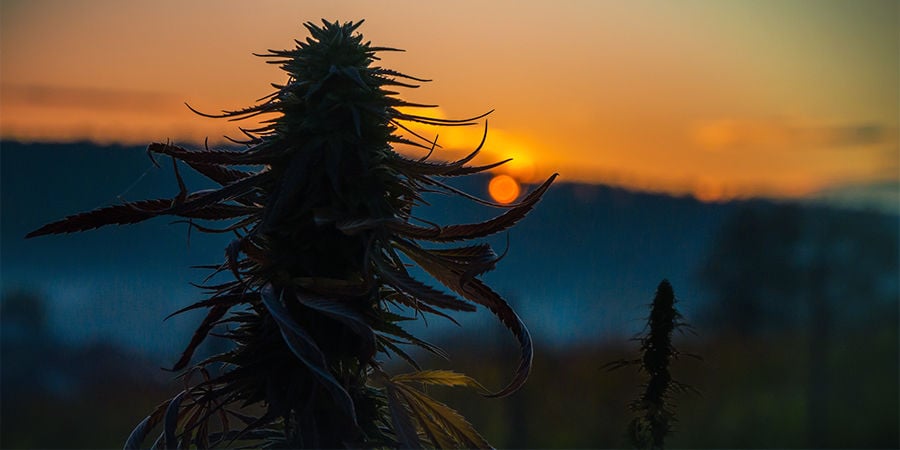
Another factor to take into account when choosing the best cannabis seeds for you is the overall size of the final plant. Your grow space will be the main factor when deciding this. Usually, several smaller plants will yield more than fewer larger plants, especially if advanced growing techniques are used.
Small
Small strains are great if you have limited space or want to keep your grow discreet, and small doesn’t necessarily mean small yields. Indica strains are often shorter, yet have larger, denser yields. So, you won’t necessarily be sacrificing anything by growing in a small space. The seedfinder categorises plants as small if they max out at 80cm indoors and 100cm outdoors.
Smaller strains are also easier to grow as the lighting requires less management. Tall strains will continue to strive upward toward the lights, which can cause multiple problems and requires careful and regular management. Small strains mostly avoid this problem.
Medium
Medium strains fall between 80 and 120cm indoors, and 120 and 180cm outdoors. It’s important to note that strains which stay low indoors may not fit into the same size category if grown outdoors. Many small indoor strains can rocket upwards in an outdoor environment.
Large
The largest strains tend to be sativa-dominant. These can be more difficult to grow indoors, as they’re often very vigorous and aggressive growers. Likewise, they will really reach for the stars outdoors, so they aren’t well-suited to stealth grows. They do, however, look great, and can offer some amazing yields. Large strains are those over 120cm indoors and over 180cm outdoors. Bear in mind that these are the lower limits. Landrace strains are more than capable of topping out at 3 metres!
Flowering Time
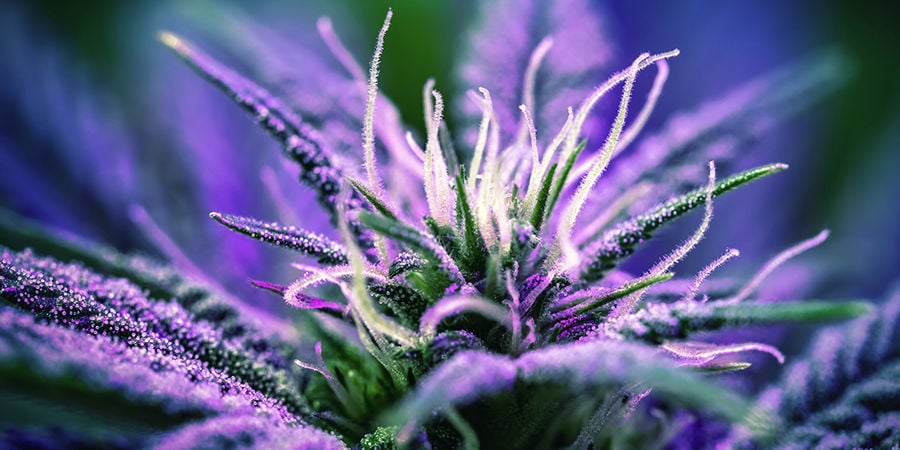
As stated, autoflowering and photoperiod strains often have very different life cycles, and these vast time differences will be of paramount importance when deciding on the best seeds for your grow.
Photoperiod Cannabis Seeds (Indoor)
Indoors, the flowering period is expressed in a number of weeks (sometimes days). This is how long it will take for your plant to mature its buds for harvest. Under grow lights, growers tend to induce flowering a few weeks after plants have entered the vegetative phase.
Photoperiod Cannabis Seeds (Outdoor)
Photoperiod seeds begin to flower when the daylight hours begin to shorten—in autumn. Therefore, for outdoor growing, the final harvest date is given. With this in mind, the main factor a grower will need to take into account is whether the weather will hold long enough for the plant to complete its life cycle.
Autoflowering Cannabis Seeds (Indoor and Outdoor)
Whether grown indoors or outdoors, autoflowering seeds take the same amount of time to grow, no matter the time of year. This does not mean they can simply be grown in any conditions. Cold weather can still kill or inhibit them, and they still need to photosynthesise to survive. The harvest time is expressed as a total number of days or weeks from germination to harvest (usually falling between about 49 and 70 days).
Cannabinoid Content
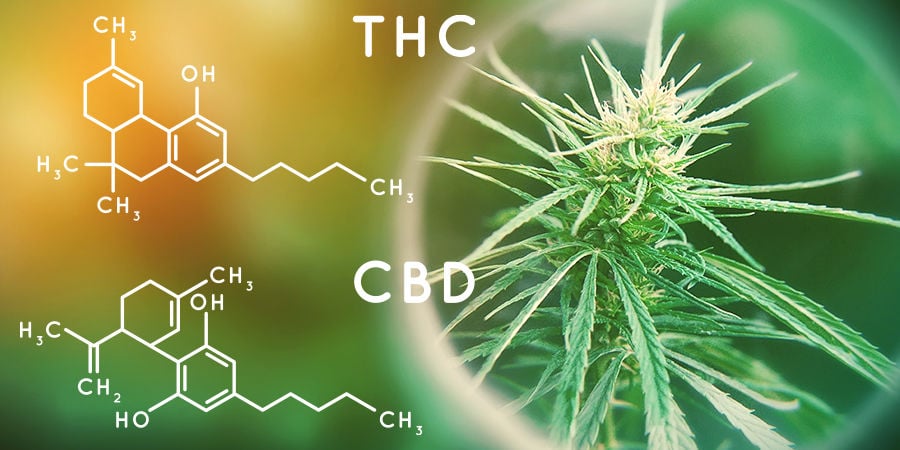
For most people, growing weed is ultimately about smoking it, so the final cannabinoid profile of the plant you’re growing is a vital factor. Most people won’t desire a super quick, super easy plant if it contains no cannabinoids!
THC
Delta-9 tetrahydrocannabinol (THC) is the psychotropic compound in cannabis responsible for the classic high. Usually, levels fall between about 15% and 25%, though some strains contain less, and some even max out at 37%! If you want to get stoned, THC is the compound to look at.
CBD
Cannabidiol (CBD) is getting rather famous now, and is the subject of much research and speculation. It is not a psychotropic compound, and will not cause a high. Nonetheless, research is pointing to a growing range of uses for CBD.
THCV
Tetrahydrocannabivarin (THCV) has recently become the subject of great interest. Stated as having clearer, more energising effects than THC, some smokers are turning to it for lighter highs.
Cannabis Effects

The diverse effects exhibited by cannabis are really quite astounding. Every strain delivers a slightly different experience worth noting. Some can be toked on with abandon, while others reward moderation. Ultimately, the user determines which effects are preferable and which are not.
Relaxing
Often, it is indica strains that produce the most relaxing highs. More specifically, strains with soothing terpenes like myrcene and linalool are responsible for these effects. Great for evenings, chilling out, or just for days when you have little to do, relaxing strains produce the classic stoned feeling.
Hybrid
Hybrid strains contribute varying effects from both sides of the genetic spectrum, and contain a unique assortment of terpenes. As a result, you can get the best of both worlds. Some smokes begin with energetic, uplifting highs and end with long, full-body stoned feelings.
Uplifting
Usually linked to sativa strains (and terpenes like limonene), uplifting highs are great for daytime smoking, creative pursuits, and socialising. But, don’t be fooled, they can also be extremely strong. Just because they're uplifting doesn’t mean you can rip ten bongs and go to work!
No High (CBD)
For whatever reason, people may not want to get high off their weed. In that case, CBD strains have got you covered. Interacting with the endocannabinoid system and producing subtle effects, you can enjoy the pleasure of a spliff without your head swirling.
Cannabis Flavours
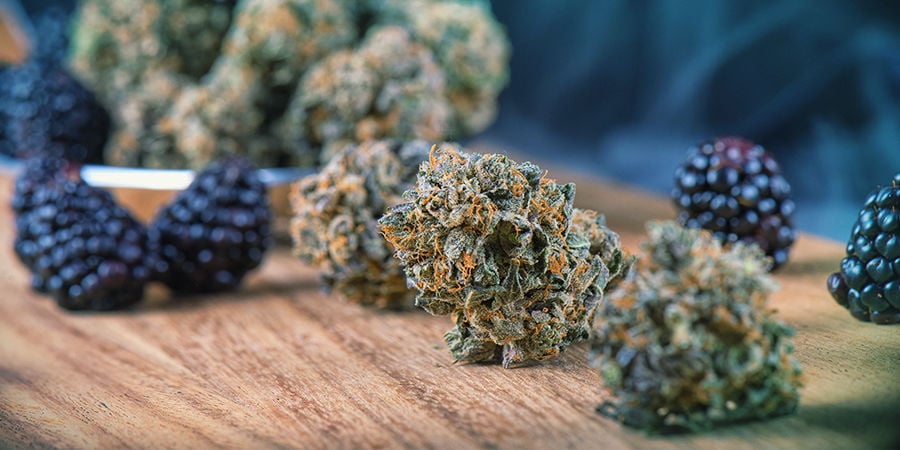
Many smokers absolutely adore the range of flavours that cannabis offers—and who can blame them? Whatever your preference, we’ve got you covered with the following categories:
- Herbal
- Piney
- Spicy
- Fruity
- Earthy
- Citrus
- Floral
- Skunk
- Sweet
As different strains offer different terpenes, often linked to sativa/indica dominance, certain types are more likely to come with certain flavours. That said, there is a large degree of variation.
A Note on Cannabis Yields
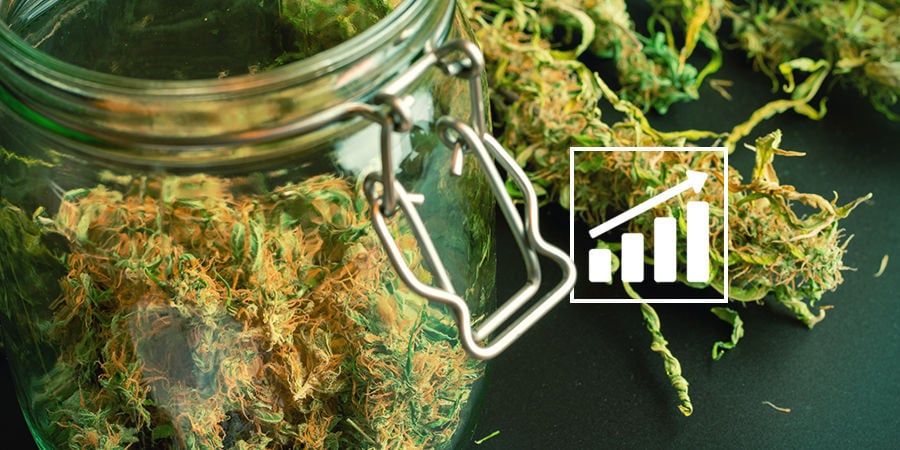
It may come as a surprise that yield is not a factor in our cannabis seedfinder. Surely everyone wants big yields? Well, that’s exactly the point. On this matter, everybody’s preference will be the same. What’s more, by selecting the most appropriate strain for your setup, you’ll be able to get the maximum yield out of that plant. There’s no point in choosing a strain that will yield 1000g/plant if it’s going to die before its life cycle is complete.
Therefore, set your criteria, and once the seedfinder has given you some suggestions, narrow it down from there.
Find and Buy Cannabis Seeds at Zamnesia With Our Seedfinder
Our seedfinder tool will revolutionise your life. No longer will you have to scroll through endless articles trying to determine which seed is the best fit for you, because only you know what you want. With our seedfinder, you’re able to narrow down and customise the criteria to get a shortlist of only the most appropriate and best cannabis seeds for your budding grow-op!
You might also like














 United States
United States


